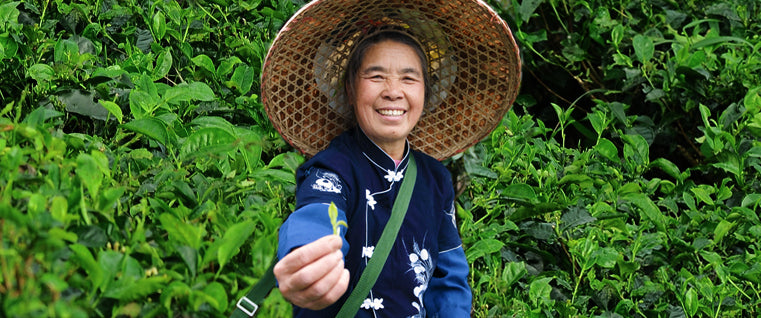The Legend of Shen Nong: Discovering Tea
Legend has it that Emperor Shen Nong, an ancient Chinese ruler, stumbled upon tea by accident around 2737 BC. As he rested beneath a tea tree, a few leaves drifted into his cup of hot water. Upon tasting the resulting infusion, he was entranced by its sweet and invigorating flavor. This serendipitous encounter sparked the cultivation of tea across ancient China.
Understanding Camellia Sinensis
The tea plant, scientifically known as Camellia Sinensis, is a member of the Theaceae family native to Asia. It boasts two primary varieties: Sinensis and Assamica. Camellia Sinensis originates from Southeast China and has been cultivated for over 4000 years. This variety, typically harvested at heights between 1 and 1.5 meters, is used in the production of white, green, oolong, and black teas. Conversely, Camellia Sinensis Assamica hails from Northeast India and neighboring regions, reaching towering heights of up to 15 meters. Primarily utilized for black tea production, its leaves are harvested at similar heights to facilitate processing.
Tea Cultivation
Thriving in tropical and subtropical regions, tea plantations require abundant rainfall, ample sunshine, and temperatures ranging from 18 to 30°C. Optimal growing conditions are found at altitudes between 800 and 2000 meters above sea level, where the tea plant flourishes.
Harvesting Techniques
Tea leaves are meticulously handpicked before dawn in cycles lasting between four and fourteen days to allow the plant to regenerate. Following harvesting, the leaves undergo rigorous sorting to ensure only the finest quality makes its way to further processing stages.
Tea Processing: Wilting and Oxidation
Upon harvesting, tea leaves are subjected to wilting to reduce moisture content, a crucial step in initiating the oxidation process. This can be achieved either through natural exposure to open air or mechanical methods. For black tea production, mechanical oxidation is employed to enhance flavor, strength, and color.
Rolling and Roasting
After oxidation, the tea leaves undergo rolling and twisting to shape and dry them, facilitating the release of desired flavors and aromas. The final step involves roasting, where the leaves are either subjected to commercial methods or traditional basket roasting, intensifying their characteristic nuances.
Tea Sorting
Once processed, the tea leaves undergo meticulous sorting based on size to ensure uniformity and uphold stringent quality standards, ensuring a delightful tea-drinking experience.
White Tea
Stage 1. Withering (in the open air)
High-quality withering:
The leaves are spread on the ground at a height of 3 cm for 36 to 48 hours.
Low-quality wilting:
The leaves are spread on the ground up to 30 cm high for 72 hours, resulting in a moisture loss of 70%.
Stage 2. Roasting
Roasting occurs at 90 to 100°C until only 6% moisture remains.
Green Tea
Step 1. Withering (in the open air)
Duration: 4 to 6 hours with a moisture loss between 10% and 15%.
Step 2. Oxidation stop
Duration: 3-5 minutes at +/- 300°C.
Step 3. Rolling and drying
Duration: 20 minutes with a moisture loss between 5% and 6%.
Oolong Tea (50-80% oxidized)
Step 1. Withering (mechanical)
Duration: 6 to 10 hours with a moisture loss of 10 to 15%.
Step 2. Oxidation stop
Duration: 3-5 minutes at a temperature varying from 400 to 500°C.
Step 3. Rolling
Duration: 3 to 4 minutes.
Step 4. Roasting (commercial or traditional)
Commercial method - Time: 20 minutes, Temperature: 130°C
Traditional Method - Duration: 8 to 12 hours, Temperature: 130 to 150°C
Black Tea (99% Oxidized)
Step 1. Withering (in the open air)
Duration: 4 to 8 hours with a moisture loss of 15%.
Step 2. Wilt (mechanical)
Duration: 4 to 5 hours, Temperature: 40°C, Moisture loss: 45%.
Step 3. Rolling
Duration: 3 to 4 minutes.
Step 4: Mechanical oxidation
Step 5. Roasting
A few minutes.
For asnwers to frequently asked tea quesitons, read our blog : FAQ - Tea Edition

